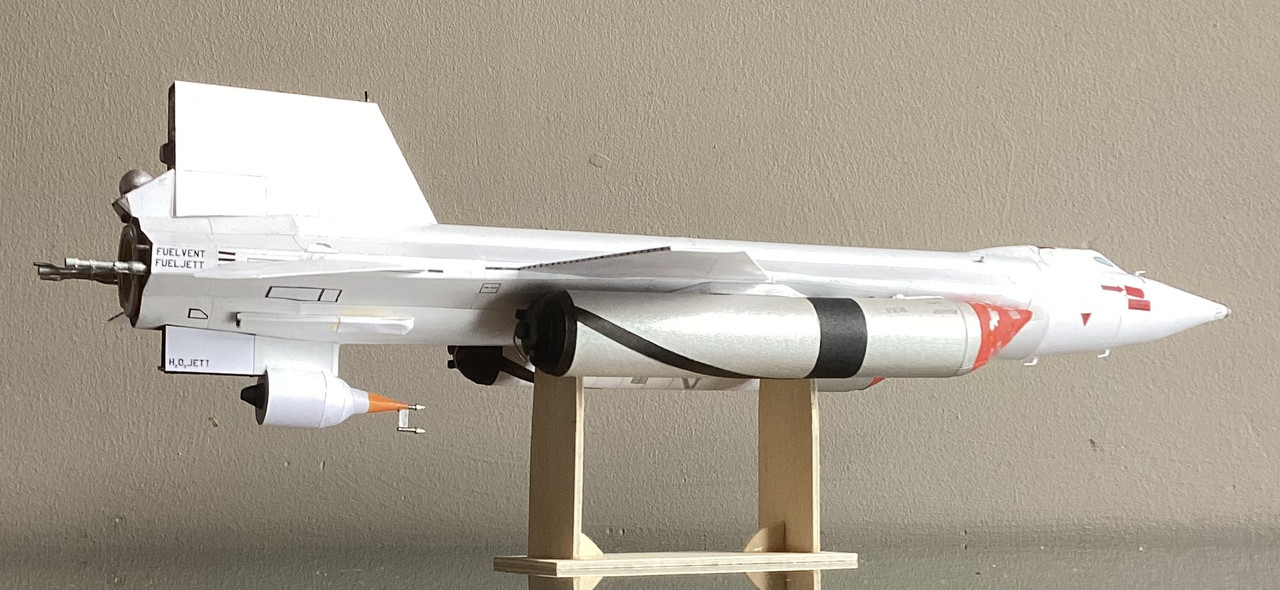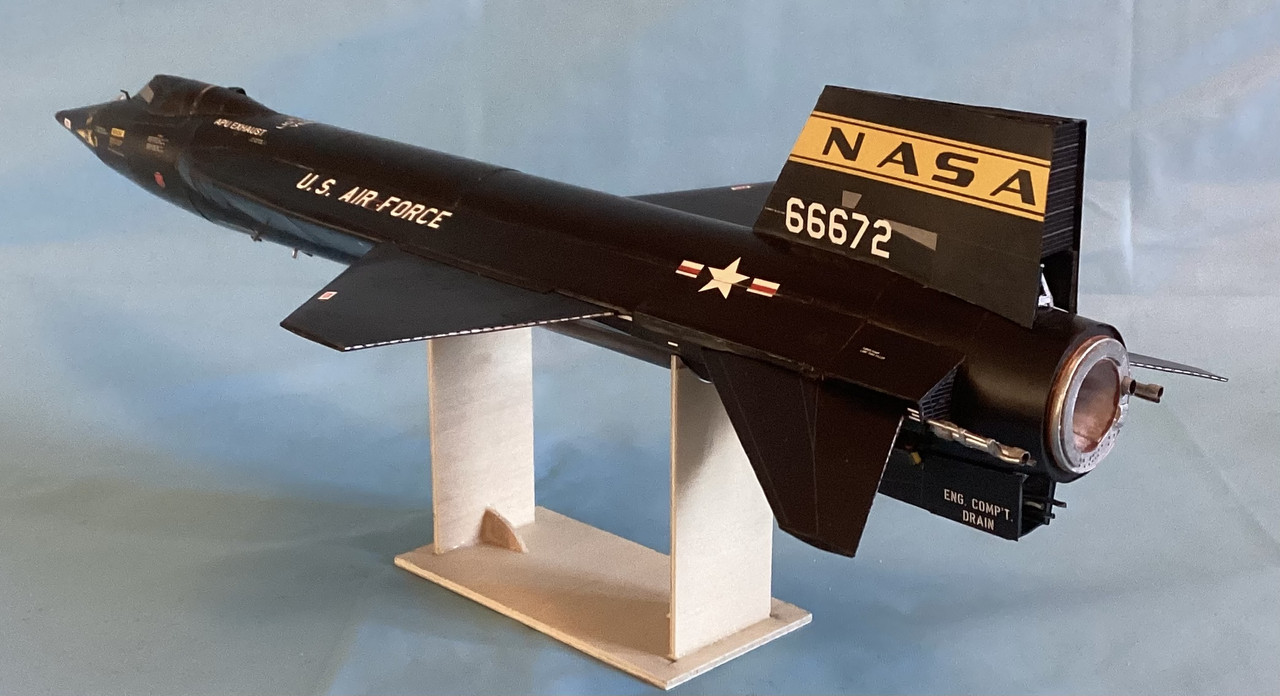Some X-15 builds….
Here are some card builds, in 1/48th scale, of various versions of the three X-15s. Over the course of their 199 flights, the three X-15s carried a variety of markings, and I've tried to represent some interesting/historic ones.
The first photo is of X-15-1, 66670, as it appeared on its first flight, Mission 1-2-7, flown by Scott Crossfield on 23 January 1960. I scratchbuilt the XLR-11 motor and other bits.
The second photo is of 66670 as it appeared on its very last flight, Mission 1-81-141, flown by William Dana on 24 October 1968. I scratchbuilt the XLR-99 motor, the wingtip pods and other bits.
The third photo is of X-15-2, 66671, as it appeared on Mission 2-21-37, Robert White's Mach 6 flight of 9 November 1961. The vehicle had test patches of white heat-resistant paint. Some printed and online sources show the patches on both sides of the canopy and fuselage, but photographic evidence shows the patches were on the left side only.
The next two photos are of the X-15A-2 as it appeared on 3 October 1967 when Pete Knight set the world speed record of Mach 6.7. The white coating was a sealant applied over the ablative, which was pink. An accuracy note about the all-white X-15A-2: I've Seen lots of folks model it in plastic or resin, but the markings are often incorrect for the world speed-record flight, which was mission 2-53-97; for example, a popular plastic and resin kit of the vehicle has markings that claim to be from the record flight but were actually from an earlier captive flight, 2-C-93. The ones depicted here are correct for 2-53-97.
Also, when technicians applied the white sealant over the pink ablative, they didn't apply it heavily under the wings and tailplanes; the ablative actually showed through. The white sealant was quite streaky, which I replicated by drybrushing watercolors.
The last photo is of X-15-3, 66672, as it appeared on Mission 3-22-36, 22 August 1963 when Joe Walker set an altitude record of 67.1 miles.





